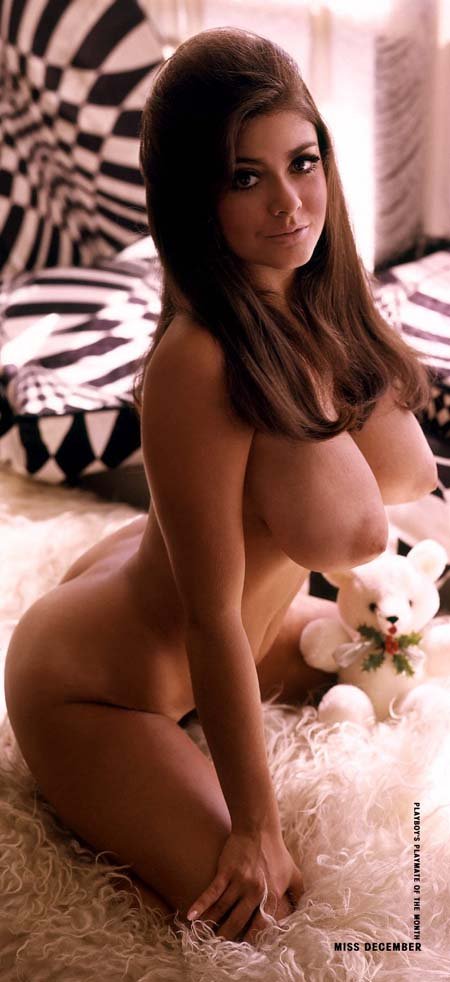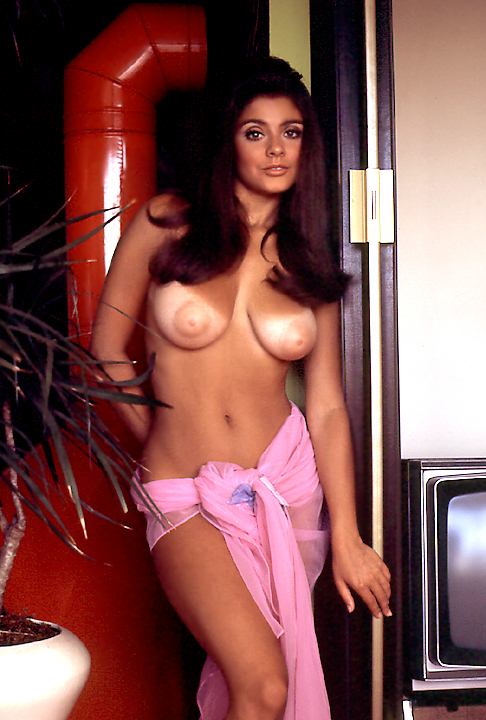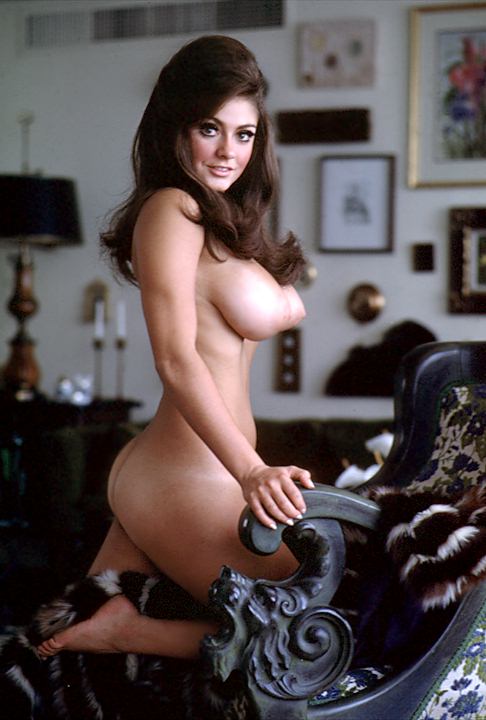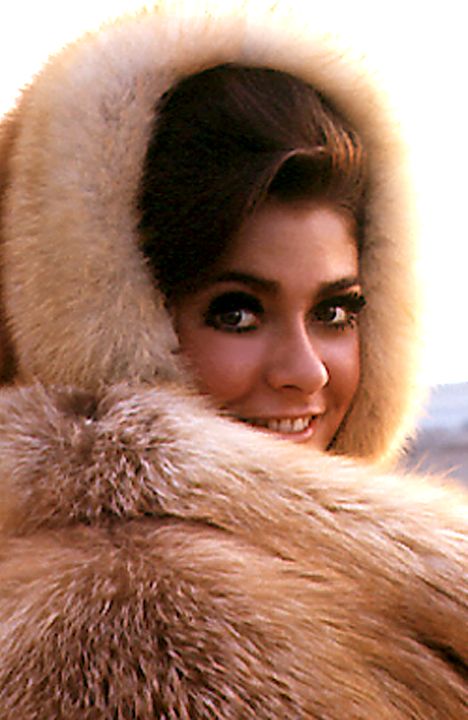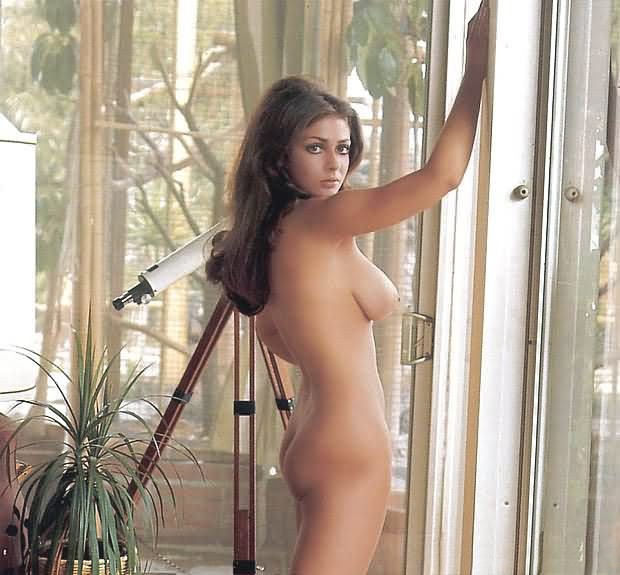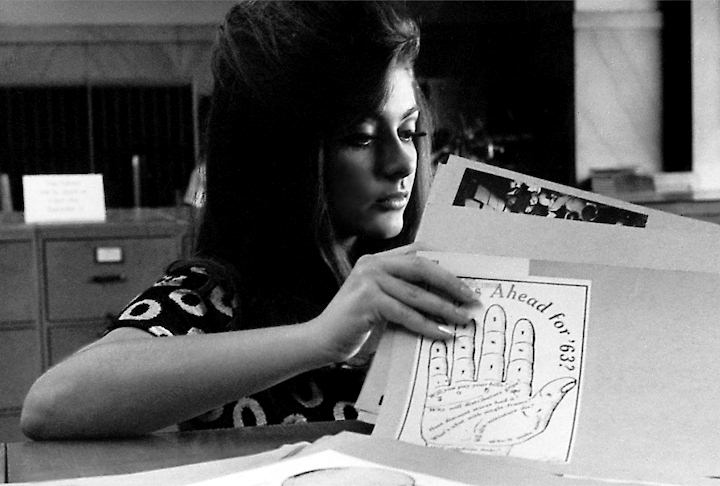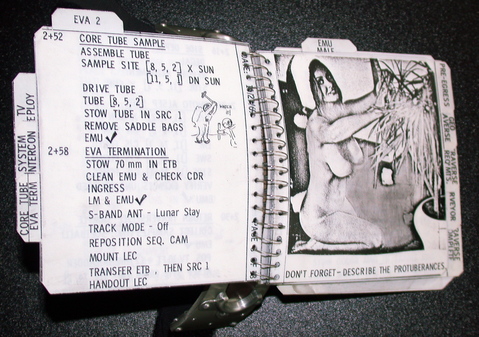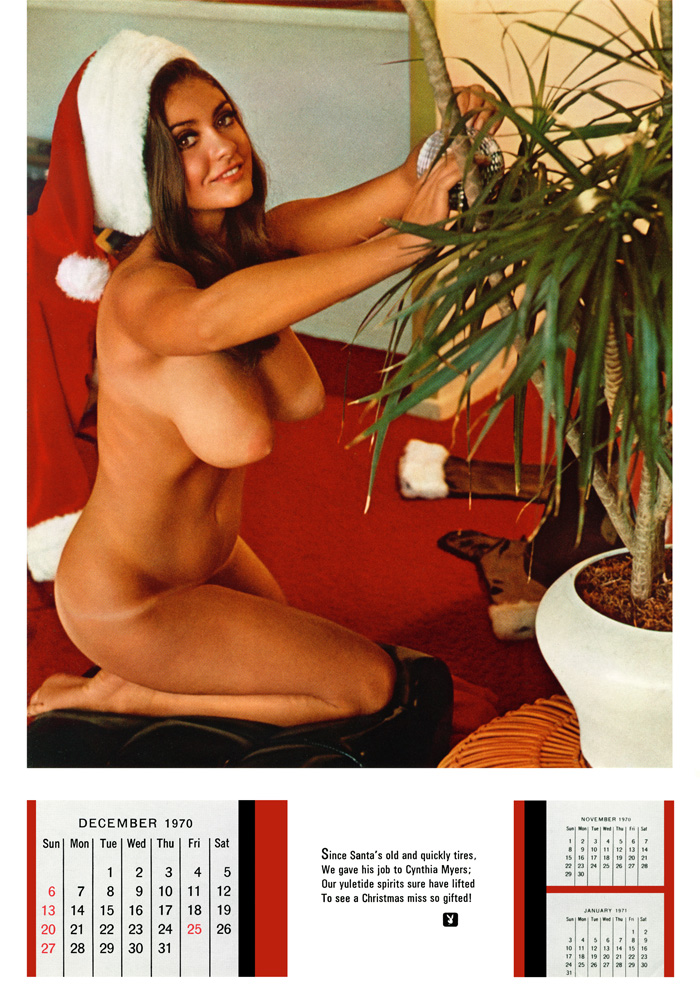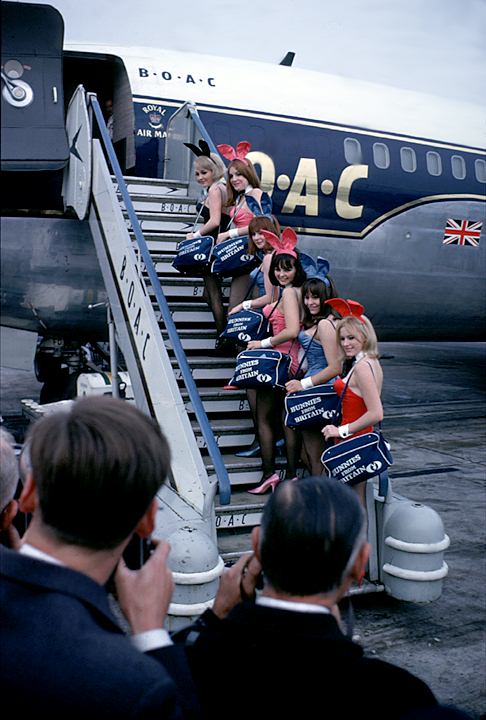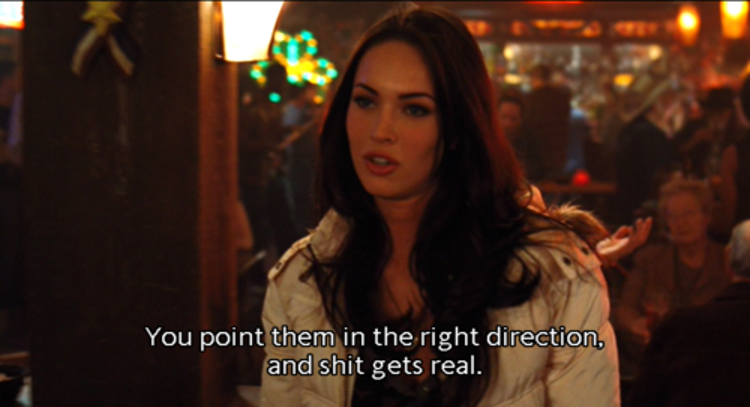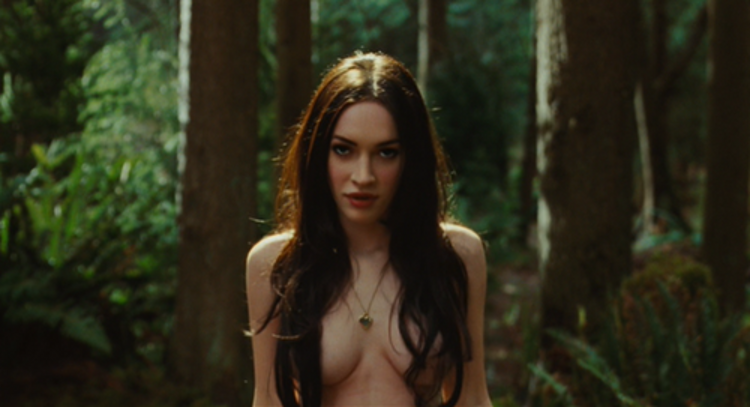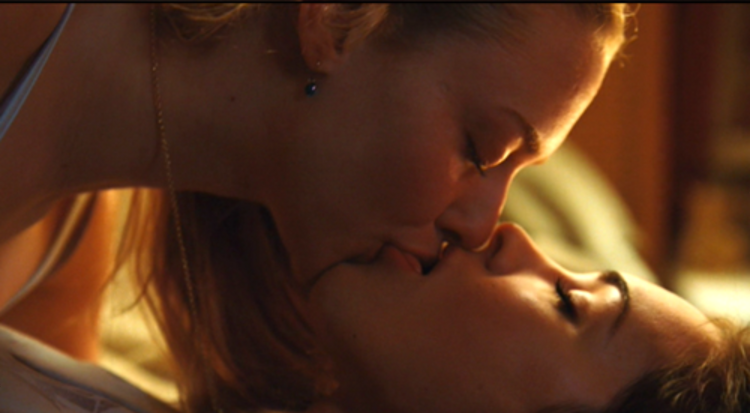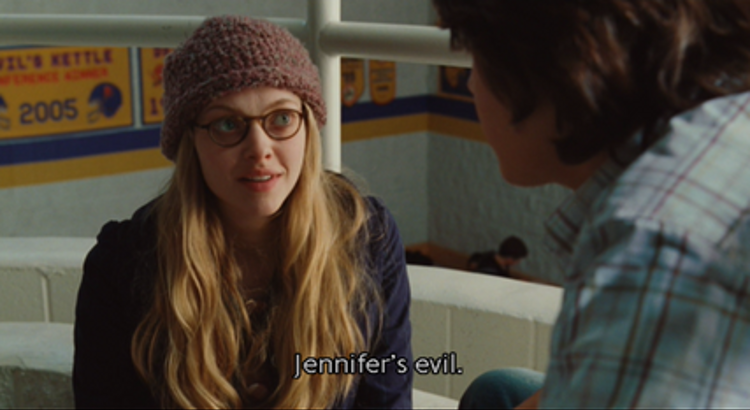Been buried in academic work, but I needed to throw out a quick, sad retread of Ms. Myers’ “Baby, It’s Cold Outside” post. Beautiful, adventurous Cynthia passed away yesterday of undisclosed causes, per Hef.
R.I.P., Ms. Myers (9/12/50-11/4/11).
“Wholly Toledo!” is the name of the article that accompanies the pictorial for the lovely and talented Cynthia Myers, Playboy’s Miss December 1968. Her wildly popular centerfold shot her to stardom among the troops in Vietnam, and a pinup of her is featured in the film Hamburger Hill. She has been a teen model, a television personality, played a lesbian songstress in one of the most famous camp films out there, and become an unwitting space cowgirl in her 60 years on this planet. Buckle up, because here we go!
Cynthia wrote to Playboy a few years ago, informing us that she’d like to be considered as a centerfold beauty. Assistant Picture Editor Marilyn Grabowski answered with a reminder that our Playmates must be of legal age but that Cynthia should keep in touch. She did just that.
Well, kind of.
The shoot was in June of ’68, and Ms. Meyers was born in September of ’50, but Playboy waited until Cynthia was comfortably 18 to publish her pictorial. It had become common practice for the magazine after the scandal with Elizabeth Ann Roberts.
In fact, the most recently featured “Baby, It’s Cold Outside” playmate, the fantastic Susan Bernard, was also 17 at her photoshoot and saw her spread published after she turned 18.
Posing underage for Playboy is not the only common ground between Ms. Bernard and Ms. Myers. While Ms. Bernard was featured in Russ Meyers’ cult classic Faster, Pussycat! Kill! Kill!, today’s special gal starred in his 1970 film Beyond the Valley of the Dolls.
I promise to have a full-out Movie Moment for Beyond the Valley of the Dolls one of these days. For my friend’s recent 31st birthday, I sent him a picture of the cast of Beyond the Valley of the Dolls with him tagged as Dolly Read and me as Cynthia Myers. I explained that I originally had me as Dolly and him as Cynthia, but I switched it because it was his birthday.
You know Roger Ebert wrote it? I don’t think he ever gets to criticize a movie again.
Cynthia is pictured reading a five-year-old palmistry pamphlet about what the following year once held for her because she placed a large credulity in psychic phenomenon.
“I’ve known since I was 15 that I’d be a Playmate. It’s almost as if this had been fated to happen.” Cynthia’s penchant for precognition can be traced to her early teens.
(Ibid.)
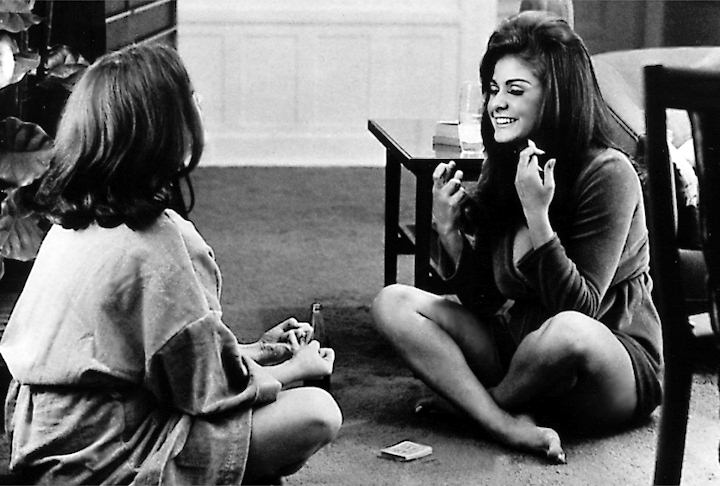

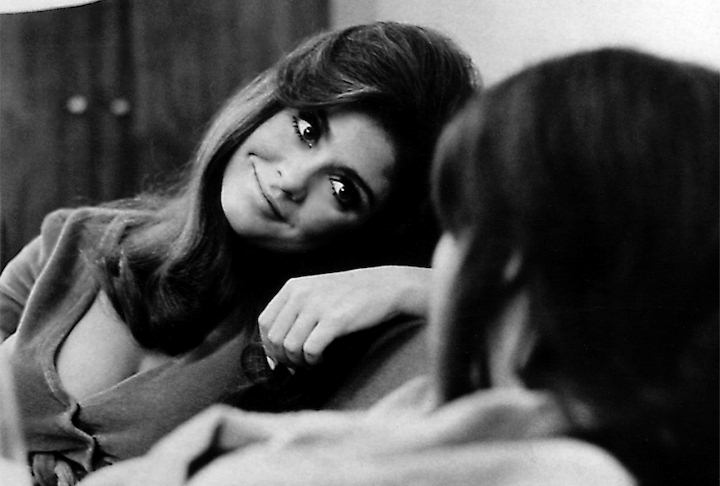
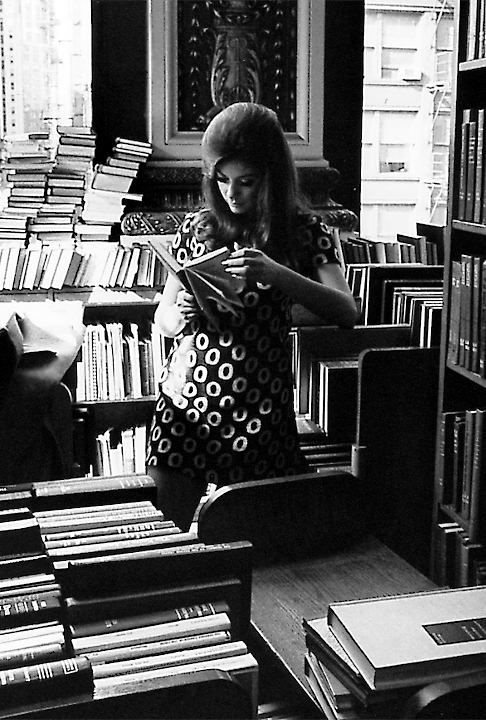
“A junior high school friend of mine in Toledo,” she says, “was a nut on palmistry, astrology and even reading tea leaves and crystal balls. Like most people, I thought is was just a bunch of baloney. But when I began reading about prophets like Edgar Cayce, I began to realize that there are strange spiritual forces in the world undreamed of even in The Playboy Philosophy.”
(Ibid.)
Ms. Myers, I think you’d be surprised by what the Playboy philosophy can dream of.
In 1994, it was revealed that a picture from Ms. Myers’ centerfold pictorial was among several that crafty NASA jokesters have launched in to space over the years. Ms. Myers, together with Leslie Bianchini, Angela Dorian, and Reagan Wilson, was snuck in to the checklist for the Apollo 12 mission that was placed in astronauts’ suit cuff on their trip to the moon in November of 1969. Ms. Myers specifically took her space journey with astronaut Al Bean.
Don’t forget: Describe the protruberances.
Boobs : Geeks :: Horse : Carriage. I think it’s kind of funny and sweet.
And the gals didn’t just go up in the lunar landing module: they straight moon walked. The astronauts found their pictures while fulfilling their extravehicular (read: outside the module on the lunar surface) mission duties on the moon itself.

Pete Conrad got Miss September 1967, Angela Dorian, (“Seen any interesting hills and valleys?”) and Miss October 1967, Reagan Wilson (“Preferred tether partner”). Al Bean got Miss December 1968, Cynthia Myers (“Don’t forget — Describe the protuberances”), and Miss January 1969, Leslie Bianchini (“Survey — her activity”).
(“Playboy Playmates pranked into Apollo 12 mission checklists.” January 13, 2007. BoingBoing.net.)
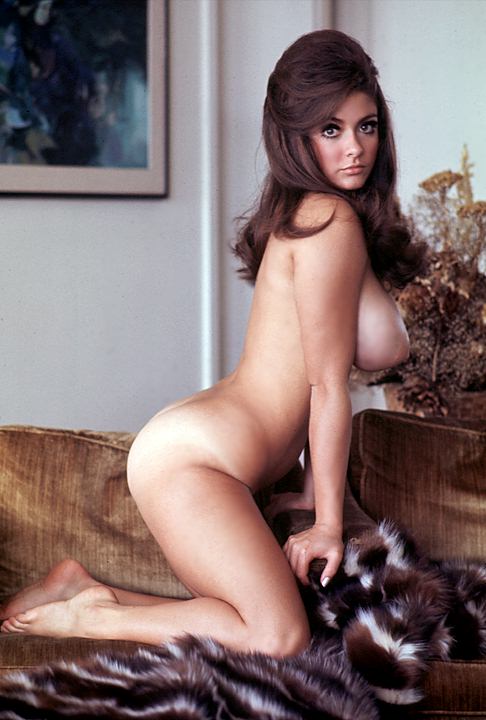
Conrad told us in 1994: “I had no idea they were with us. It wasn’t until we actually got out on the lunar surface and were well into our first moon walk that I found them.” Bean recalled: “It was about two and a half hours into the extravehicular activity. I flipped the page over and there she was. I hopped over to where Pete was and showed him mine, and he showed me his.”
(Ibid.)
A large, color version of the shot of Cynthia that was smuggled up to the moon in the Apollo 12.
Lest we forget, the lovely and talented DeDe Lind, Miss August 1967 and, like Cynthia, one of the most popular Playmates in the magazine’s history, also rode shotgun on the Apollo 12 mission. She was in the control console, her picture labelled, “Map of a heavenly body.”
I always feel compelled when talking about the Playmate pictures and NASA to bring up the fact that my sorority’s badge is on the moon. Neil Armstrong put it there for his wife. It’s my sorority’s badge and it is on the moon. The moon that is in space. Sorry, but I get pretty cocky and excited by that. Tell a friend.
This much more recent picture of Ms. Myers just might get her kicked out of the Red Hat Society.
Can our prescient Playmate predict anything about her future? “I’m going to be an actress,” she says simply. “Notice I didn’t say ‘I’d like to be,’ but ‘I’m going to be.’ I don’t know how good I’ll be as an actress, but I’ll be one.”
(“Wholly Toledo!” Playboy. December 1968.)
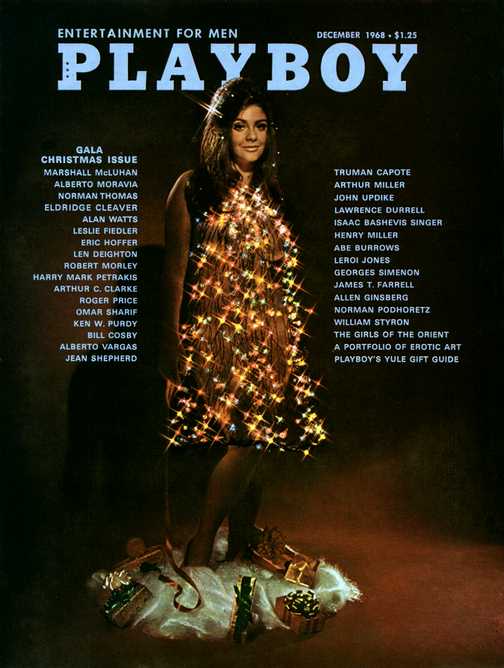
Judging from her track record as a prophetess — and from her already abundant attributes — we’d like to venture a prediction of our own: Playmatehood should be just the beginning for the remarkable Miss Myers.
(Ibid.)

